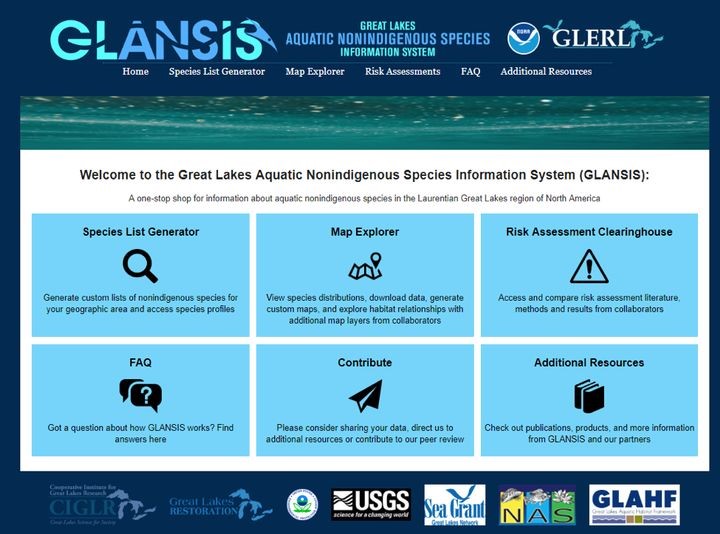GLANSIS partners with NOAA Central Libraries to update invasive species profiles
NOAA librarians helping build advanced bibliographies and conducting in-depth literature reviews for each species profile that is due for an update.

With more than 185 aquatic nonindigenous species (ANS) established in the Great Lakes and even more on the regional watchlist for potential invasion, having access to the most up-to-date information on ANS is crucial for researchers and environmental managers. To address this need, the Great Lakes Aquatic Nonindigenous Species Information System (GLANSIS) team has partnered with the National Oceanic and Atmospheric Administration’s (NOAA) to update the literature that forms the core of the GLANSIS database.
One-stop shop
GLANSIS species profiles are designed to be a “one-stop shop” for information about ANS in the Great Lakes, providing comprehensive summaries of identification, life history, distribution data, environmental and socioeconomic risks and impacts, and management and control strategies for each non-native species present within the lakes. The database also maintains a separate watchlist of species identified as likely to invade, and the risks associated with their potential establishment in the region.

As the state of scientific knowledge is constantly changing for each of these species, GLANSIS is regularly updated with new information published in peer-reviewed journals, agency reports, websites and other news sources -- a significant amount of work, given the more than 200 species included. This year, NOAA librarians have assisted the GLANSIS team in building advanced bibliographies and conducting in-depth literature reviews for each species profile that is due for an update. Profile updates happen on a five-year cycle, but profiles may be updated sooner if new information about especially important ANS becomes available.
New processes, protocols
Using EndNote libraries provided by the NOAA librarians, the GLANSIS team can rapidly synthesize information for the species profiles, as well as the Risk Assessment Clearinghouse and the new Impacts Database also hosted on the site. New protocols for bulk-uploading references to the site (the national-level ANS database of which GLANSIS is a regional arm) were also developed with the new NOAA EndNote libraries in mind, ensuring that the source literature remains carefully documented. These full bibliographies are linked from each GLANSIS species profile (click ‘References’ near the bottom of any species profile to access the full reference list), improving public access to the original data sources and improving transparency of the scientific information.
This partnership with NOAA Central Libraries has provided the GLANSIS team with customized, exceptionally detailed literature search results for each species, which helps ensure that the information in the database is comprehensive, timely, and complete. Through this collaboration with NOAA librarians, GLANSIS is able to better fulfill its mission of being a key regional hub of accessible ANS information for scientists, environmental managers, and the public at large.
Learn more about GLANSIS online, or contact Rochelle Sturtevant at rochelle.sturtevant@noaa.gov.
Michigan Sea Grant helps to foster economic growth and protect Michigan’s coastal, Great Lakes resources through education, research and outreach. A collaborative effort of the University of Michigan and Michigan State University and its MSU Extension, Michigan Sea Grant is part of the NOAA-National Sea Grant network of 34 university-based programs.
This article was prepared by Michigan Sea Grant under award NA180AR4170102 from the National Oceanic and Atmospheric Administration, U.S. Department of Commerce through the Regents of the University of Michigan. The statements, findings, conclusions, and recommendations are those of the author(s) and do not necessarily reflect the views of the National Oceanic and Atmospheric Administration, the Department of Commerce, or the Regents of the University of Michigan.



 Print
Print Email
Email




